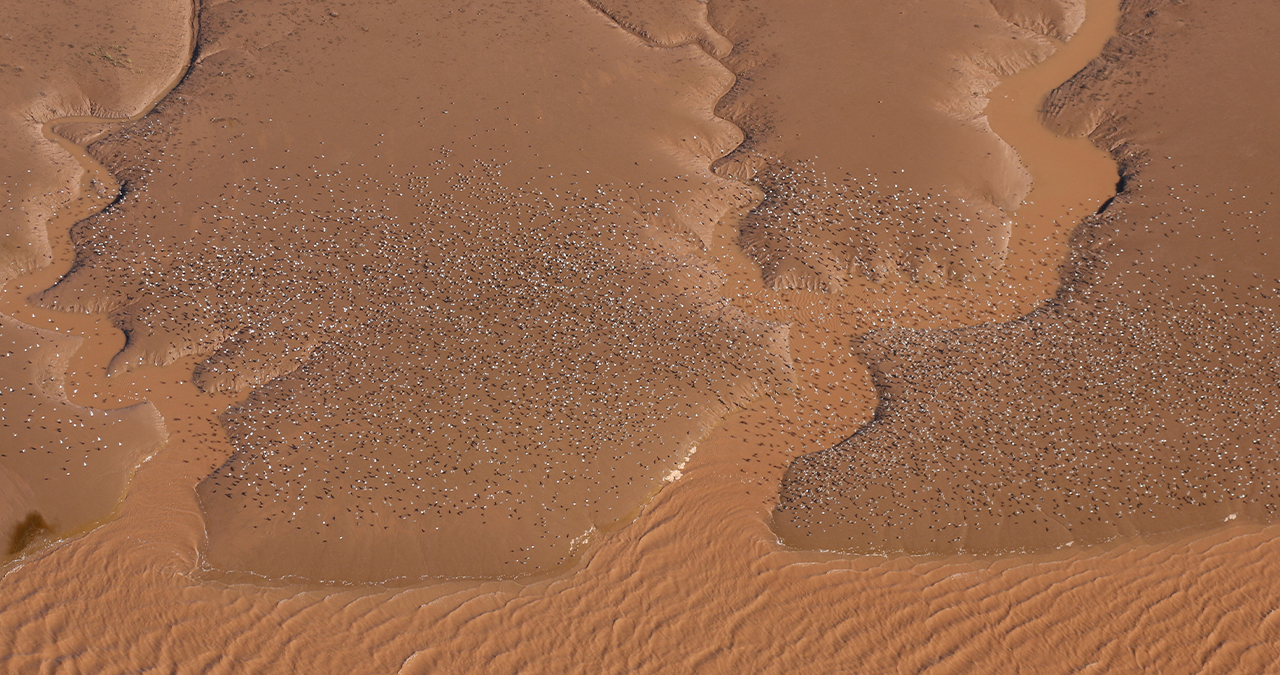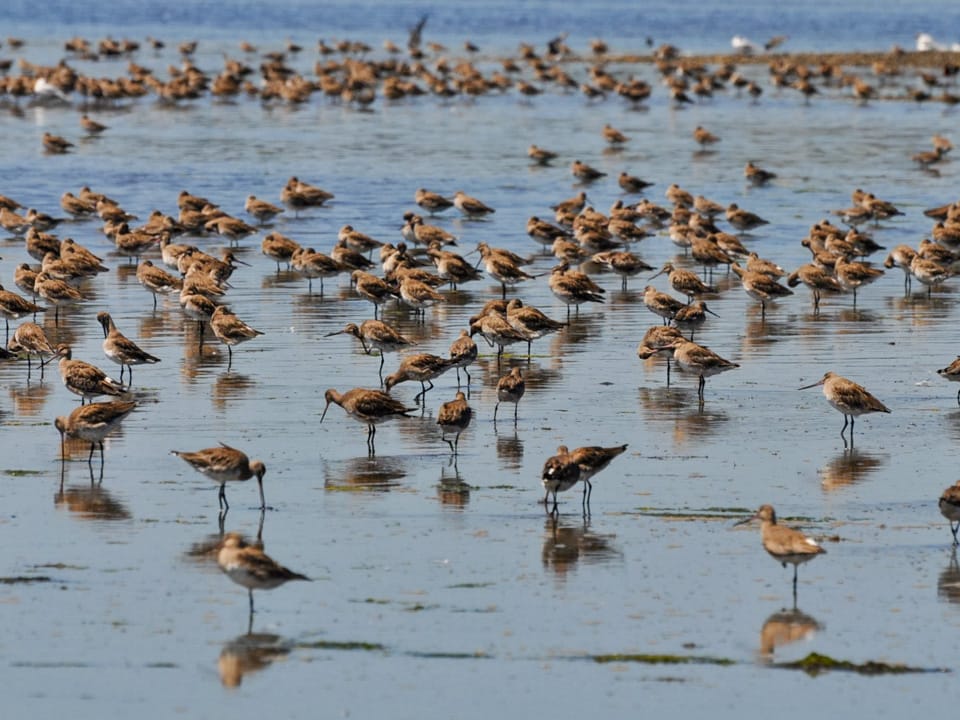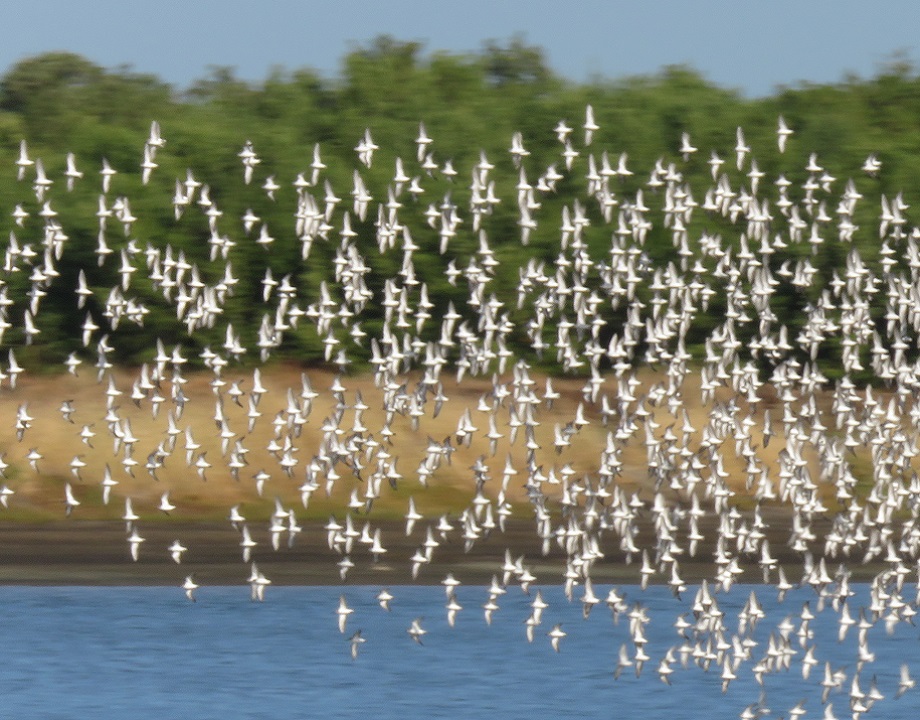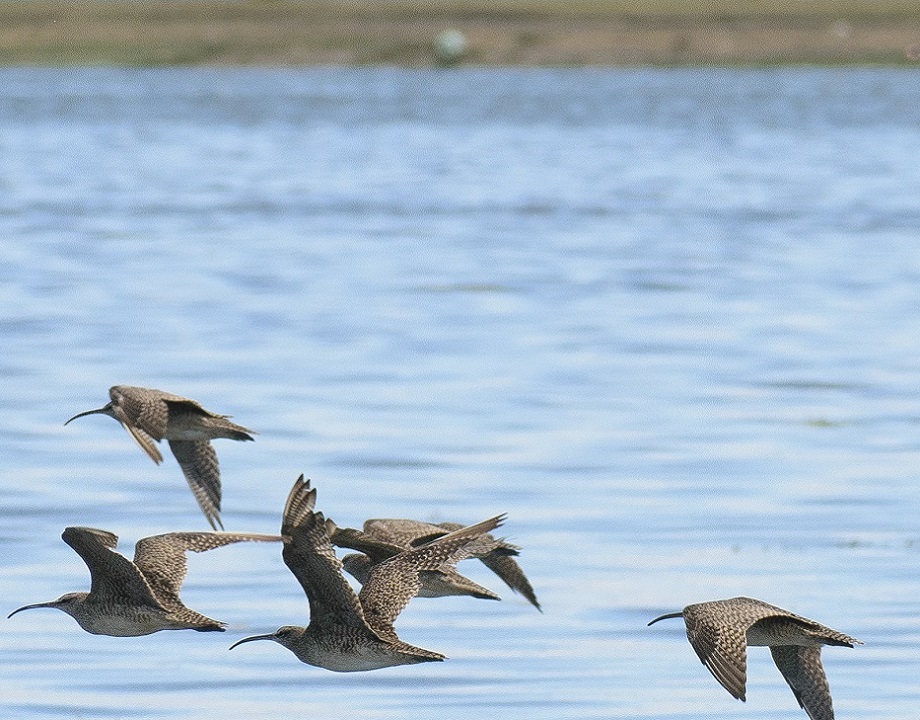By James Lowen
If you have never visited a shorebird-strewn mudflat, you are missing out on a spectacle like no other in the world of birds. At low tide, thousands upon thousands of shorebirds are racing against time–scurrying, wading, or loping across the immense muddy slick before the tide comes in and the feast within becomes waterlogged until it recedes.
The returning sea water pushes the shorebirds off feeding grounds to fly in masse low above the flats–giant, billowing, shimmering clouds of feathers, trilling and quipping in constant communication–until they locate land high enough to wait out the tidal peak.
“The best mudflats for shorebirds are often around estuaries, because those areas are softer and thus easier to probe, as well as richer in invertebrates as a result of rivers bringing in mineral-rich sediment and other nutritional matter,” explains Arne Lesterhuis, a shorebird monitoring and conservation specialist at Manomet and the Western Hemispheric Shorebird Reserve Network (WHSRN).
Even so, this is not a ‘one-size-fits-all’ habitat. Mudflats may look uniform to our untutored eyes, but to a hungry bird there are good spots and bad…





 Back to all
Back to all


